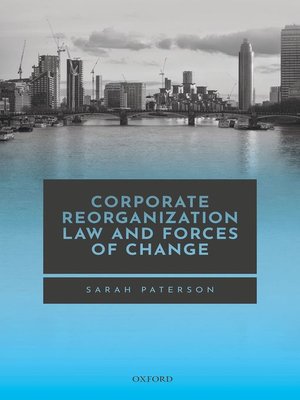
Sign up to save your library
With an OverDrive account, you can save your favorite libraries for at-a-glance information about availability. Find out more about OverDrive accounts.
Find this title in Libby, the library reading app by OverDrive.



Search for a digital library with this title
Title found at these libraries:
| Loading... |
Corporate Reorganisation Law argues that corporate reorganisation law is seen by market participants as a tool they can mobilise and adapt according to practices, logics, and identities in the of the financial and non-financial corporate markets. Thus changes in market practice, in the participants in the process, or in how the participants view their objectives, can significantly change the ways in which corporate reorganisation law is mobilised and adapted, even if the law has not undergone any reform. This book argues that corporate reorganisation law cannot be evaluated using a theoretical model in isolation from the wider institutional context in which corporate reorganisation law is mobilised and adapted by the participants to the process. In establishing the new methodology, the book undertakes a detailed analysis of six key changes in market practice, logic and identities in the financial and non-financial corporate fields. A comparative US/UK approach is adopted in analysing both the process of institutional change and the implications for law. This provides a fascinating lens through which to see how different institutional environments in the financial and non-financial markets in different jurisdictions are drawing together, and interacting with very different legal systems which were adapted to the distinct, original institutional environments in which they were developed. From this analysis important lessons for legal harmonisation efforts in Europe and in non-European jurisdictions are drawn out. The work emphasises the need to look at formal legal rules in combination with other, non-legal and legal institutions and argues that current reform debates in both the US and UK have suffered because scholars, practitioners, and policy makers have not started their evaluation of the case for reform by placing corporate reorganisation law in this wider institutional context. The book aims to fill this gap, and to provide a methodological approach for the future.






